
Behold, I will do a new thing; now it shall spring forth; shall ye not know it?
I will even make a way in the wilderness, and rivers in the desert
Chilswell House – masterplanning a priory for the future …
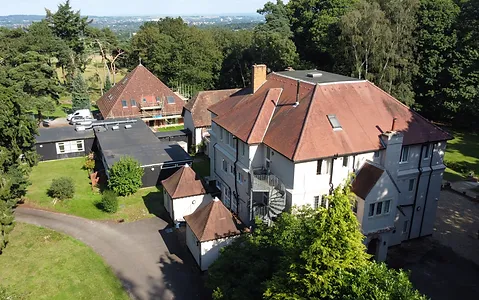
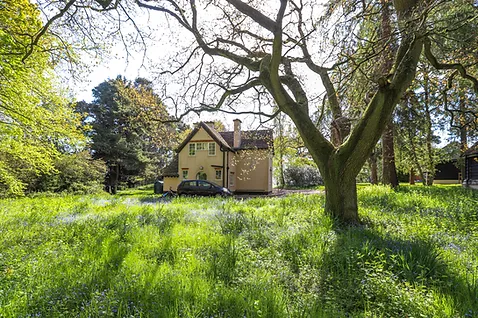
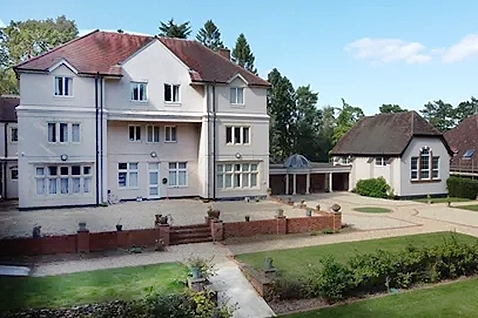
Nestling in woodlands on Boar’s Hill overlooking Oxford’s famous ‘dreamy spires’, Chilswell House was built in 1907 for the Poet Laureate Robert Bridges, his wife Monica – an accomplished pianist and composer – and their three children.
The house and its beautifully landscaped 17 acres played host to some of the most renowned literary and intellectual figures of its day – including W.B. Yeats, Ezra Pound, and George Santayana.
A separate barn-style structure alongside the main house was home to Robert Bridges extensive library of rare books and his manuscript collection.
In the late 1920s the house was severely damaged by fire and and was substantially rebuilt.
After Robert Bridges’ death the property passed through several ownerships, and its architectural composition suffering further when a third floor was added in the 1960s.
The property eventually came into the hands of the Discalced Carmelite Order in 1958, who have been running the site as a popular centre for residential and day retreats, lectures, seminars and presentations.
The library building is currently the priory’s chapel, and several standalone structures have been added over the years providing accommodation, dining and educational facilities. Another small outbuilding serves as the priory’s book and gift shop and is also home to the friars’ Teresian Press publishing house. However, most of these buildings are tired and need upgrading.
The priory is renowned as an oasis of peace and stillness, offering peaceful and green spaces that are an ideal place for quiet prayer, meditation and walks. In recent years the retreat centre has been welcoming a rapidly increasing number of residents and visitors, and the range of spiritual services the friars have been asked to provide have also expanded significantly.
As much as possible has been done to ensure that the high standard of the priory and its buildings and facilities are maintained, but it has become clear that a point has now been reached where a more fundamental re-ordering of the site and its structures is needed if the friars are to be able to continue their mission into the future …
The need for change …
Renewal of the tired buildings on site is long overdue. The buildings are disparate and don’t do justice to the idyllic woodland surroundings in terms of their aesthetic appeal. The timber annex building, constructed 60 years ago, needs replacing to provide en-suite guest accommodation more suited to present post-pandemic expectations.
As well as replacing the bedrooms and meeting rooms in the annex building, the project includes internal refurbishment of Chilswell House itself, the internal reordering of the chapel, and new kitchens, refectory and library.
The proposals will allow buildings to relate more efficiently and harmoniously to each other and will also make the site more environmentally sustainable. The treatment of the landscape and the way in which the buildings nestle into it is important, and a significant part of the project will include sensitive hard and soft landscaping designs for formal and informal gardens and open spaces.
The Priory is a place of retreat, contemplation, teaching and prayer. The buildings and site are in need of upgrading to improve their environmental performance and the quality of accommodation afforded to the friars and retreatants and to safeguard its future.
What are the problems…?
The current layout of the site and the relationship of the buildings create several challenges for the friars and their guests. The shortcomings are summarised as follows:
i. Site aesthetics:
The buildings on the site have been developed and added piecemeal over the years with no coherent masterplan strategy, the consequence is a collection of disparate buildings that are not connected and have no consistency of architectural styling; the main house has lost some of its original architectural charm but could be improved upon with some sensitive adaptation.
ii. Connection between buildings & landscape
The landscape setting is delightful but the buildings do not engage very well with the gardens, woodland and views beyond
iii. Making more of the landscape
The woodland setting deserves to be celebrated and much more could and should be made of the gardens and open space following a coherent landscape design including formal and informal garden and landscaped areas to release the potential of the site
iv. Quality of accommodation
The accommodation in each building has grown tired and, in many places, unfit for purpose to meet expectations of 21st century friars and guests. Guest bedrooms are too small and have shared washroom facilities which were appropriate when they were built in the 1960s and 1980s but not suited to the needs of guests 60 years on
v. Environmental concerns
Any proposals to make changes to the site and buildings must take into account the need for improved building performance to reduce energy usage and improve the efficiency of the building in every respect. The current buildings are inefficient in energy use and heat retention and in need of significant upgrade and improvement
vi. Building condition
The need to overhaul and upgrade some of the aging accommodation on the site. Whilst well-maintained, some of the buildings are near the end of their life and the ongoing maintenance burden needs to be addressed as part of any site-wide strategy
vii. Continuation of the Carmelite tradition
For over 60 years Chiswell House has been enjoyed by friars and retreatants for contemplation, prayer, Christian worship and teaching on the Carmelite tradition; it is an oasis of tranquillity and, like any organisation it is essential that adaptation is made to the buildings to ensure this valuable work and legacy can continue. It is incumbent on the present Prior to steward the site well to be able to hand it on to future generations.
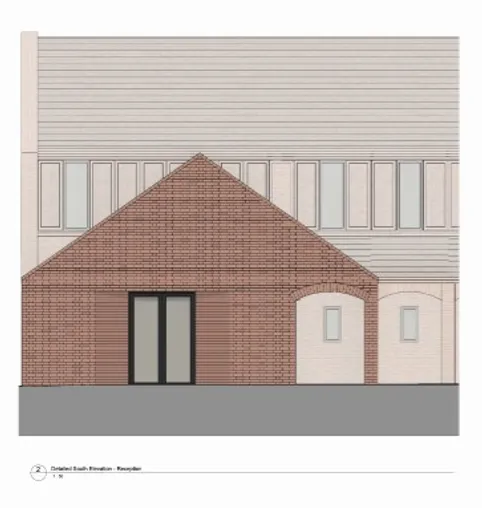
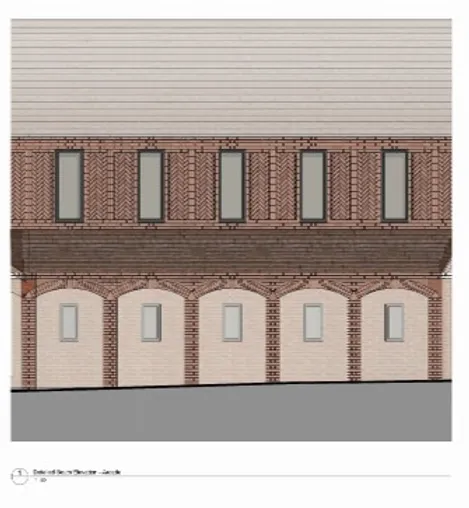
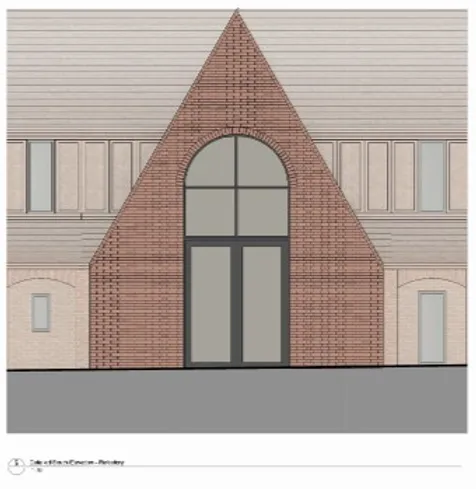

Our vision for the future of Chilswell priory …
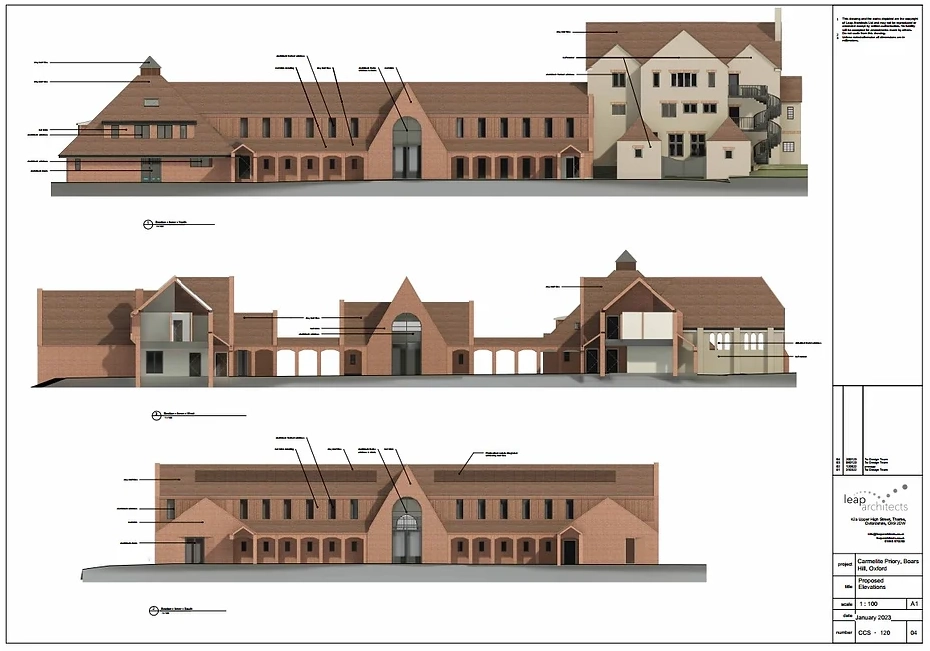
Chilswell House
Refreshed and refurbished with modest internal changes to provide ensuite shower rooms to each of the bedrooms on the first and second floors. New wheelchair accessible WC and lift. Reinstatement of the conservatory to the south, overlooking the garden terrace.
Cloistered courtyard
Arcading linking all buildings and closing off the courtyard on the west side. Stone paving under arcading with mown grass perimeter. Sunken central garden with rough grass and meadow flowers and orchard trees. Central swale pond planted with ferns around a water feature.
North wing: retreatants entrance, staff offices, kitchens, refectory, smaller meeting rooms, first floor guestrooms. Guests to the priory will come to a reception area and bookshop, and then out along the arcading to reach other buildings. Partly double height entrance foyer leads to refectory, WCs, stairs and lift, and meeting room suite. Upstairs to 6 guestrooms, a common area, rear escape stairs and 2 staff offices. New guestrooms will be modest in decor and size and will make the most of the views over the woodland around.
East wing: conference hall and recording studio. Partly double height entrance foyer forms a break-out area with stairs, teapoint, store rooms and WCs, leading into the hall. Upstairs to the studio for online recording including sessions in the hall.
The Pyramid
The ground floor will be altered to provide 6 new ensuite guestrooms, 2 wheelchair accessible. The first floor of the Pyramid has recently been refurbished to provide 8 ensuite bedrooms: one will be removed form a common room and corridor link to the south wing guestrooms.
South wing linking the existing House, chapel and Pyramid: Common room, sacristy, chapel, library, first floor guestrooms. A double height entrance narthex leads to a large common room, the existing chapel and a new library (now equally accessible to friars and guests).
The Chapel
The chapel will be completely reordered with new furniture, liturgical fittings, murals and statuary, lighting and heating.
The Cottage
The existing cottage has been recently refurbished to provide 5 guestrooms and a common room.
Services
Existing unsightly LPG and oil tanks will be removed. Chilswell House, the south wing and the Pyramid will be heated by new biomass boilers in the existing basement boiler room in Chilswell House.
There will be on-site electricity generation by PV solar panels in the west meadow and on south facing roofs. All these investments will substantially reduce the carbon footprint of the Priory in the future.
Landscaping
Comprehensive proposals across the whole site will accompany the planning application, to provide the fullest possible context The present disposition of woodland and open meadows remains, with pathways marked out in bark surfacing or mown grass to lead people through its varied spaces and viewpoints – including the woodland to the north of Chilswell Lane which will become accessible at all times to the general public.
Nearer the buildings there will be gardens which restore to use some designs almost lost from the Bridges period, and a new lake; all creating various quiet, reflective places.
Long overdue management of the woodland is a vital task, and begins in February: diseased or unsafe trees will be removed or reduced, unsuitable non-native species taken out, and crowded re-growth thinned out. We will also make an early start on new planting, particularly the screen planting to the west and north.
The landscape design is seen to be as important as the buildings: our aim is that both will equally enrich the experience of the Priory for residents and guests alike. Both will declare the glory of God and the Gospel of our Redeemer.
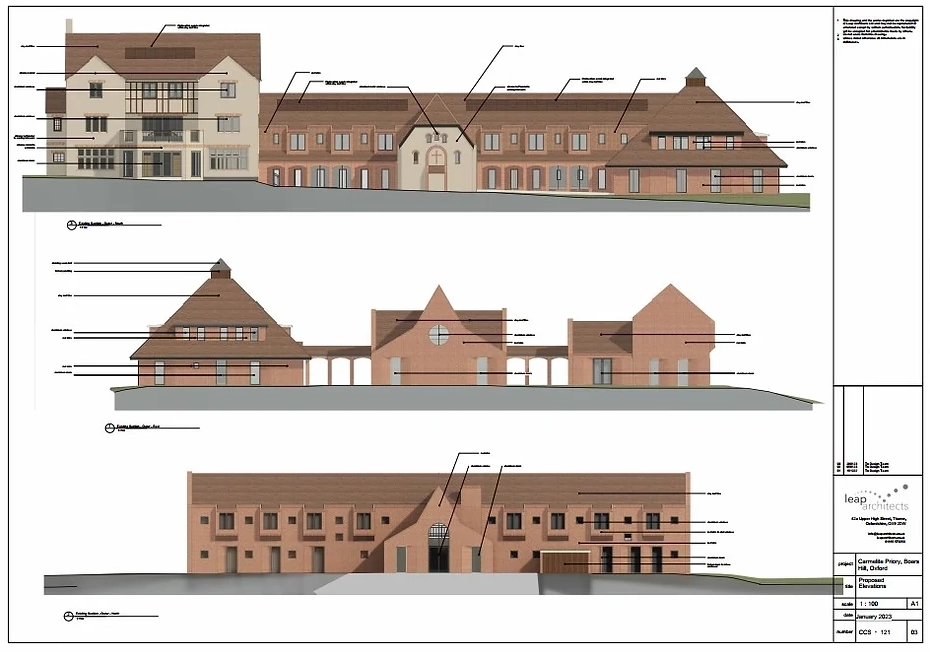
How you can help the Chilswell priory project …
Dear friend,
The 17-acre site at Chilswell is idyllic, a beautiful celebration of God’s creation; we have no intention of changing the way the site is used but we recognise the need to improve the quality of the accommodation and the way the buildings and landscape complement each another. We also need to have the facilities and services to take our mission forward so that we can provide support, guidance and spiritual inspiration in the Carmelite tradition to an ever-increasing number of people.
For more than two years we have been working on appropriate and sensitive changes with our architect, landscape and lighting designers, energy consultant and a range of other specialists in ecology, arboriculture, traffic, and the visual impact on the landscape. We also put on an exhibition and entered into a detailed consultation with our neighbours around Boars Hill to ensure our impact on the landscape and local community was minimal. We have received excellent feedback and support for what we want to achieve.
All of this now brings us to the critical stage of funding the project, which is expected to take around five years to complete, at an expected total cost of £5 million. With your support, we know we can achieve our goals. With a gift of any amount, we will be able to redevelop Chilswell House and priory to the glory of God and the Gospel of our Redeemer.
If you would like to know more about the project, and how your donation can be such a huge help, please do contact me and I’ll be very happy to chat with you about the project, and how you can become involved.
Look forward to hearing from you,
GOD BLESS

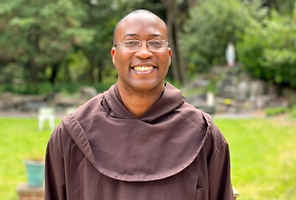
Fr. Alexander Ezechukwu, Prior of Chilswell Priory
You can contact me …
By post: Carmelite Priory, Chilswell, Boars Hill, Oxford, Oxfordshire, OX1 5HB
By phone: 07927 563653
By email: admin@carmelite.org.uk
